Overview
Facts or it didn’t happen. Let’s start with a summary of the small and big wins that helped us move further:
Product and support
- One new theme released: Noto (a notebook inspired concept blogging theme)
- Two free themes released on WordPress.org (the lite versions of Julia and Jason)
- A fruitful writing activity on our blog with 22 valuable articles (from case studies to interviews with our customers and educational resources)
- A new ↬ pricing strategy better anchored in the overall market mindset and expectations (read below)
- Our first ↬ Black Friday marketing campaign (read below)
- A bunch of Thank You Letters sent to our beloved customers around the world
- Big steps forward for ↬ Flamingo, a design systems creation tool we are developing as a side-project (read below)
Team and culture
- We’ve expanded our marketing department with a new designer, George M.
- We’ve had our first full-featured ↬ internship programme, and Cosmin is our new colleague (read below)
- We’ve diverged paths with three of our mates: Ilinca who moved to London and decided to broaden her professional challenges; Radu who switched to a fully remote company; and Adi due to values and culture misalignment
- Our ↬ weekly leadership meeting continued with remarkable regularity, helping us to navigate murkier waters than we would have liked (read below)
- Plenty of 1:1s sessions to invest in everyone’s growth and make sure we align around the same values and goals
- An intense recruitment journey both for filling the pipeline and having interviews and chats with new people from the community
Revenue
There were a lot of headwinds for our revenue streams in these past 6 months. While we’ve done our best to increase numbers on our own shop, external streams constantly eat that progress. This is why we find ourselves with a more or less constant monthly average, despite nearly doubling our shop revenue.
Things on Envato and WordPress.com are murky at best. The whole themes marketplace is shaking both due to external trends (moving to platforms for creating sites) but also internal ones (inertia and lack of knowledge about what comes next).
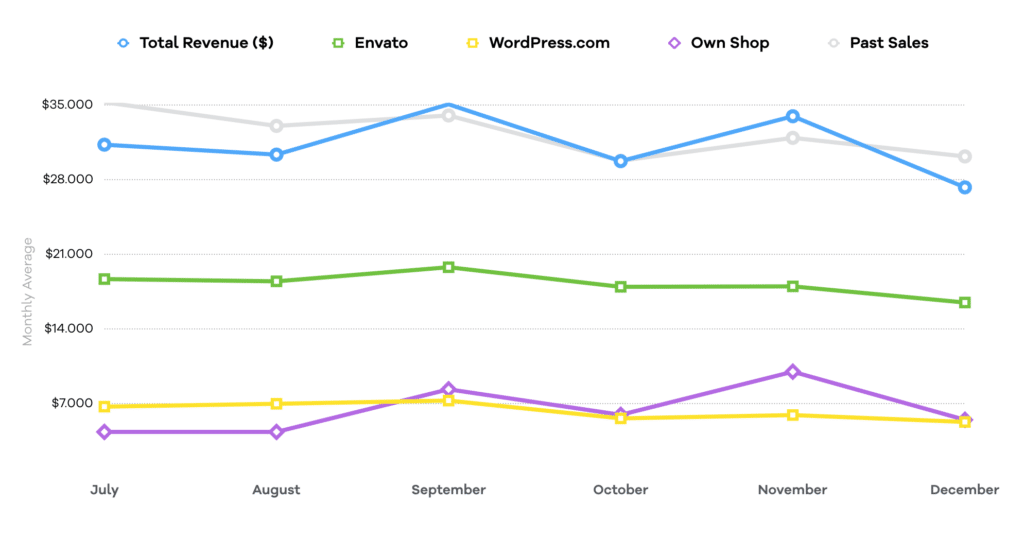
In our own shop, we’ve pretty much done what we intended. Especially starting with September (with a new pricing model) and peeking with our Black Friday campaign in November, things seem to be aligning for further growth.
When it comes to actual numbers, the last 6 months look like this:
— $31,297 average monthly average (–3% down from $32,266)
— $18,247 monthly average from Envato (–12.3% down from $20,801)
— $6,536 monthly average revenue from Pixelgrade Shop (+89.5% up from $3,448)
Expenses
Our expenses haven’t dropped (quite the contrary), but they are at a level suitable for the transition we are going through. The fact that the gap between them and revenue has shrunken is no reason to panic, but it is something we need to keep a closer eye on.
So, our average monthly expenses hovered on $28,729 (+2.3% from $28,074), broken down into:
— 72% salaries
— 20% maintenance (rent, software, accounting fees, suppliers)
— 8% occasional expenses (hardware, marketing, traveling)
While not easy, we’ve done our best to be more efficient when it comes to maintenance and occasional expenses, thus gaining more room for salaries as we try to bring new talent into the mix.
Themes subscriptions… Not so much
A year back we’ve introduced a new pricing strategy and product offering centered around subscriptions. It was all based on thoughtful analysis and predictions about the state of the WordPress themes market, all filtered through what we believed would make for a sustainable business model. We had high hopes that we could communicate this to our customers, and they would jump on board.
We were wrong. Reality has shown us that we were overly optimistic about our capability of shifting long established market expectations regarding price and package offerings (yes, Envato casts a long shadow). Despite our best efforts, the overall mindset is, sadly, against a subscription-based model when it comes to WordPress themes.
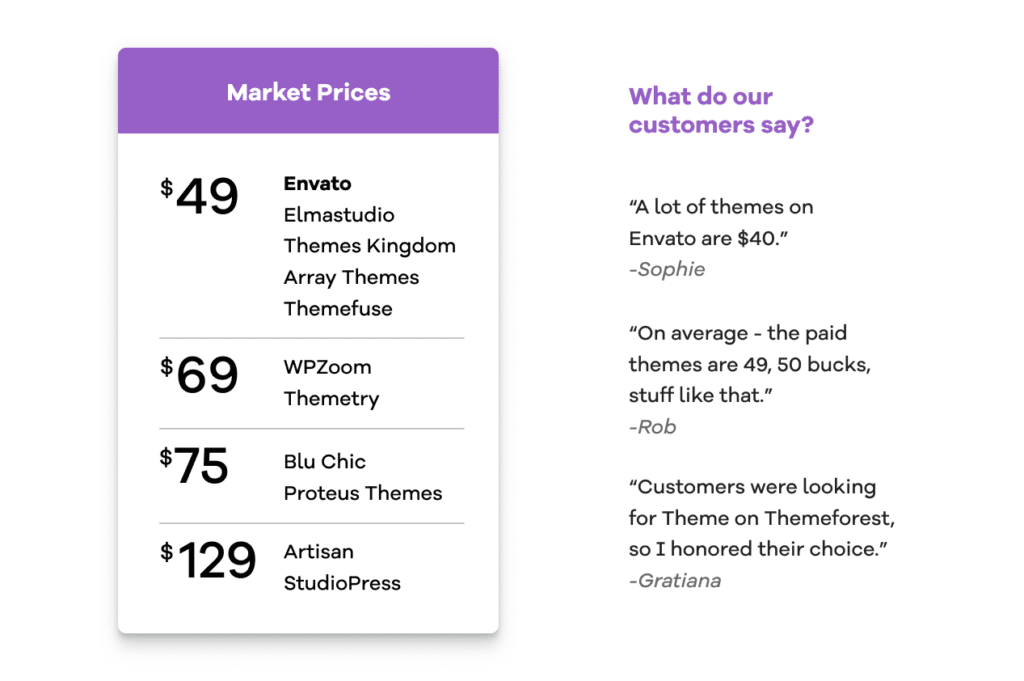
Something had to change. But what? To answer this, we’ve doubled our efforts of talking directly to our customers and ended up doing countless Skype calls and email exchanges with anyone who would be willing to help with their insights. At the same time, we went further with our market analysis and got a better grip on its ever-shifting dynamics and constraints. Thirdly, we navigated a much broader process of building a pricing model, factoring in our newly acquired knowledge, like the psychology involved, average price distribution, the value proposition of our competitors, big and small, etc.
What we’ve done?
With this new found understanding of what our (prospective) customers really need and their pre-existing expectations, we decided to introduce a new pricing strategy for our shop, one that is more focused on one-time, single theme purchases. While it may seem like a significant setback from our previous setup, we are confident it is more like a reframing of our initial goals.
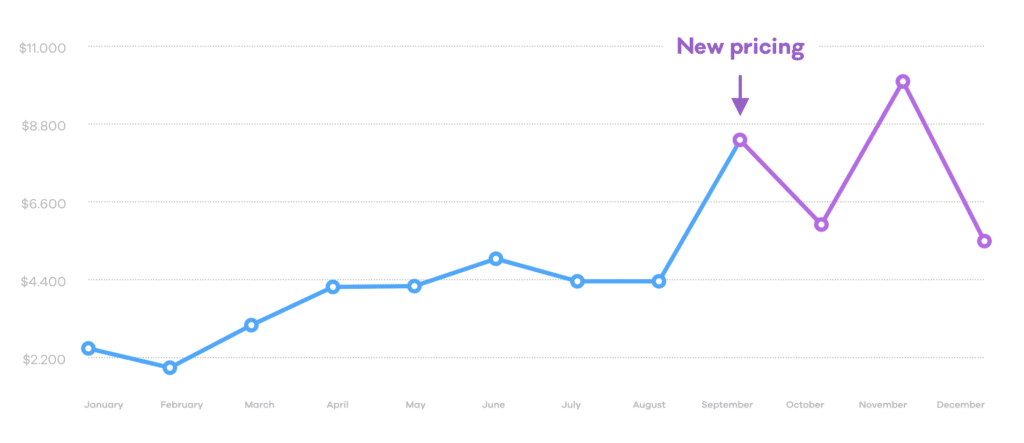
So far, the new pricing strategy seems to be working well. Our shop revenue has been continuously growing, and our customers feel that current price options are better aligned with their needs. It is still too early to draw any definitive conclusions, but we will come back to this in our future transparency reports.
Internship programme
During the summer break, we’ve planned and organized our first fully-fledged internship programme. It was a (backend) development programme aimed at Computer Science students, and our primary goal was to try and bring promising new people in our team that were, first of all, a good match regarding culture, core values, and overall work ethics.
We’ve set it in such a way that would push for a steep(ish) learning curve with plenty of feedback and hands-on mini-projects related to our current market (WordPress). We’ve set clear rules and expectations right from the start, allowing our interns to have a pretty good idea of what they are embarking on. We can safely say this worked beautifully making the whole experience a win-win situation for all involved.

Although we had more candidates, we settled on three students since we felt that was a number we could safely handle in our current conditions and would ensure a healthy dynamic among them. After the first month or so, we reduced the team to two since one of them couldn’t keep up with the pace. At the end of the three months of intense learning, we made the decision that Cosmin was the right fit for us, and he gladly joined our team as a Junior Backend developer.
The entire experience was beneficial beyond having a new crew member. Vlad, our CTO, and mentor in this programme gained a great deal in terms of reconnecting with the teacher inside of him. The team as a whole benefited from the boost of energy brought along by people at the very beginning of their professional life. And finally, Pixelgrade gained further exposure and notoriety among the next (local) generation of developers.
We can safely say we will definitely do this again!
Our first Black Friday campaign
We’ve always been skeptical about offering discounts and running pushy marketing campaigns. We know how much time, energy, and money we invest in creating our products, so yeah, we sincerely believe what we offer deserves every single cent (and even more).
However, we’re also pragmatic, and we keep an eagle eye on how things are changing within the landscape of themes and plugins, so we decided to create our first Black Friday / Cyber Monday campaign. It was also the right timing to make such a move because now we have three people in charge of all the marketing efforts.
Therefore, in only one week we made it happen: from the creative concept to the execution, we managed to create a coherent red thread.

The deal was generous and straightforward: 40% off for themes and services listed on our shop, running from Friday 23rd to Monday 26th of November.
Here’s what we did in terms of marketing actions:
- Social media ads — we run dedicated ads for a bunch of specific segments on Facebook, Instagram, and Twitter; we also used video ads and we’re eager to experiment even more in this area
- E-mailing — we created a series of e-mails focused on the deal, without losing our tone-of-voice or authenticity, and that’s huge for us
- Push notifications — we have used an internal system to send contextual notifications with the offer inside the WordPress dashboard
- Affiliates — we informed our affiliates about the promo campaign and got a boost from their side as well
We succeeded to earn $4,692 in just four days and that’s an amazing increase of +485% from the average we made in the weeks before and it’s almost as much as we did in the whole previous month.
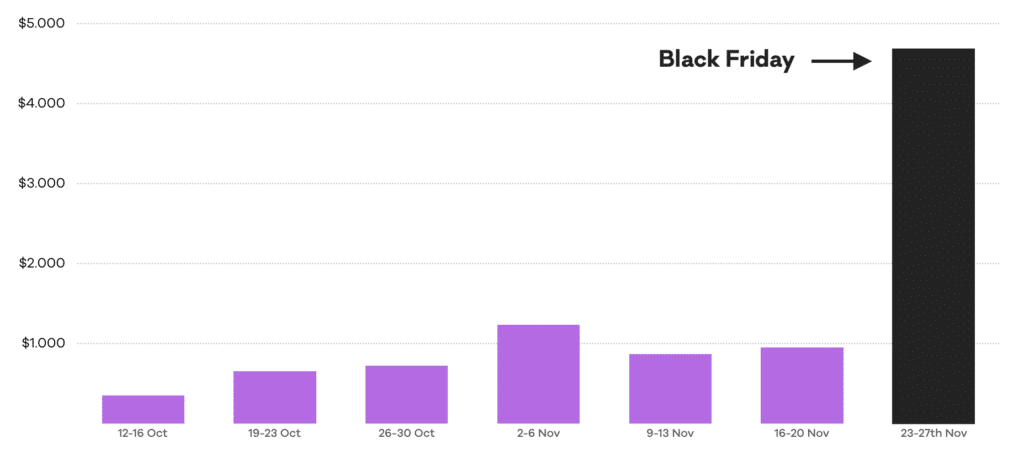
On top of that, what’s interesting is that the last year, in the same timeframe, things were the other way around. Basically, the revenue was down with around -35%.
In terms of performance, we’re proud to say that e-mailing was the main hit concerning conversions (25), followed by social media ads (9), push notifications (4), which led us to an overall conversion cost of $10.90.
On the other side, what’s even more important for us is that we learned a bunch of lessons on a team level:
- We improved our communication skills and we managed to make the most out of both joyful and pressing moments
- We exercised how to organize and track tasks more efficiently thanks to our daily standups
- We proved, once again, how much complementarity matters in getting the best possible results.
All in all, it was a beautiful exercise that helped us create stronger bonds, earn more trust, and highlight a great feeling of belonging. These are traits and perks hard to convert them into money, but they are definitely priceless for both our evolution as professionals and how we are going to approach upcoming marketing campaigns.
Flamingo: Getting a grip on our future
In our previous Transparency Report, we’ve talked about Style Manager and how we were pushing things forward for the way a customer customizes its site style consistently and predictably. Even though we haven’t posted any updates, the whole project is alive and kicking in most of our themes.
The last six months represented an intense period of research and development, often ending up in places we didn’t quite expect. And when we say research, we really mean it. We’ve squeezed all the extra time we could “steal” from our primary focus (WordPress themes) and deep dive into a wide range of human and technical subjects, discovering whole areas of knowledge we were oblivious before.
While our journey started as an additional layer on top of our products, we’ve realized soon enough that we were in a rather advantageous position. By being so stringent on design and “decisions, not options” since our beginnings, we’ve sort of trained ourselves to constantly think of systems, constraints and, more importantly, conveying design intent through code. Throughout the research, we’ve realized that we already had what it took to tackle a more meaningful problem than merely offering a set of style guides.
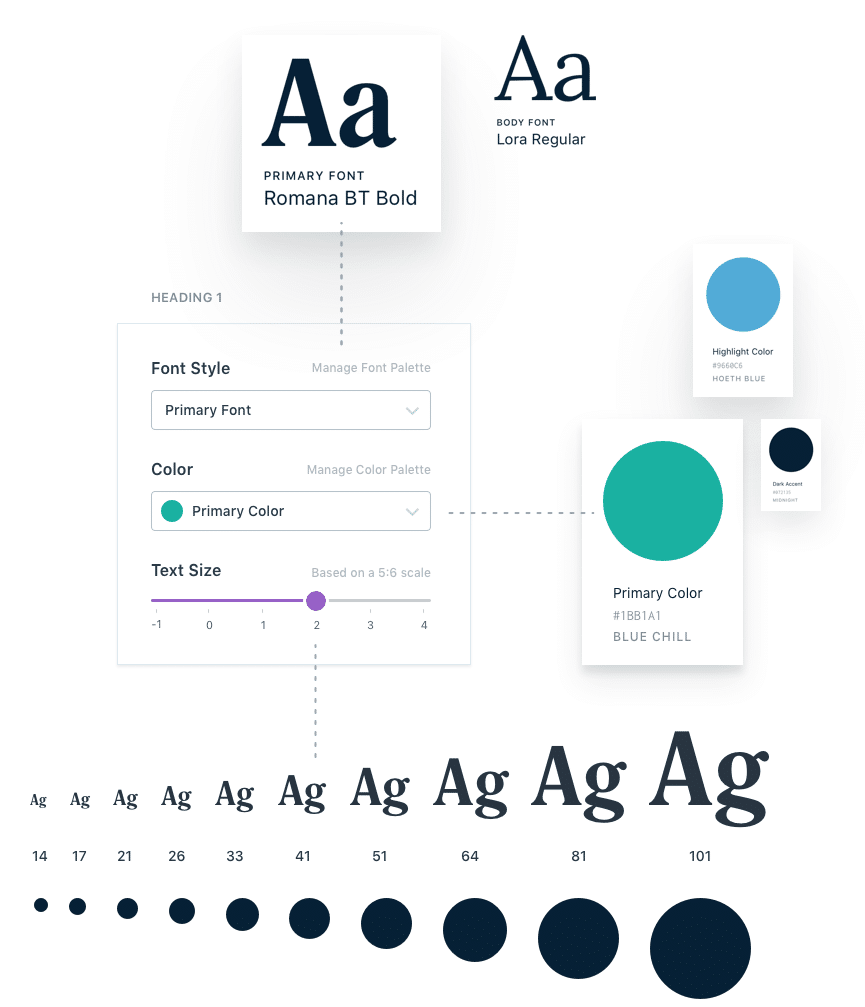
We got hooked by the challenge of enabling a more balanced, two-way relationship between design and development. If “OK. Yet another project about bridging the gap between design and development with standardized components gathered in a design system” sprang to mind, you are on the wrong path. The whole hype around “everyone should have and maintain a design system” (pushed by designers) is not our main focus.
With Flamingo we aim at bridging the gap between minds and the actual medium the end digital product will live in (the web, mobile apps, AR, VR, who knows what else). We want to help designers break free from the (digital) pen and paper they have been forced to use for years and instead use a tool that is adapted to their way of thinking, and to their processes, and ultimately help them make better, more informed product decisions.
For such a tool to exist and deliver on its promises, the relationship between designers and developers needs to change because we need to infuse the work environment with the end medium knowledge held by developers. The tool needs to provide feedback about the real-life capabilities and constraints of the digital medium(s). By going there, we open the possibility of two-way collaboration between design and development, significantly improving communication (and eliminating that dreaded handoff), cutting down product creation and maintenance costs, and deliver products that make full use of their digital medium.
We are fully aware this is a very ambitious goal, and it could take a very long time to reach it. We are also aware we are a small team, with limited resources, and big delays could drain our energy and determination. That is why we will do this in stages, starting with the low hanging fruits (instant gratification FTW).
An example of integration with the default WordPress 5.0 theme.
Today, the Flamingo platform is at the stage where one can create and manage basic design systems (color, fonts, and spacing) and deliver them to WordPress via a custom integration (a WordPress plugin), keeping the end site config in sync with the applied design system.
Stay tuned for more and we would love to hear your thoughts about it.
Leadership team huddle
Every single week we (Oana, George, and Vlad) gather to run an informal leadership meeting to align our vision on both business and non-business topics.
The huddle changed quite a lot over the last six months since we noticed the needs shifted as well. If in the early days we talked a lot about operations on a
We often found ourselves centering heavily on the rest of the team, and we forgot that we too require attention, interest, and motivation to keep our wheels spinning. That doesn’t mean that we became opaque to theirs. Not at all. We just aimed for a better balance.
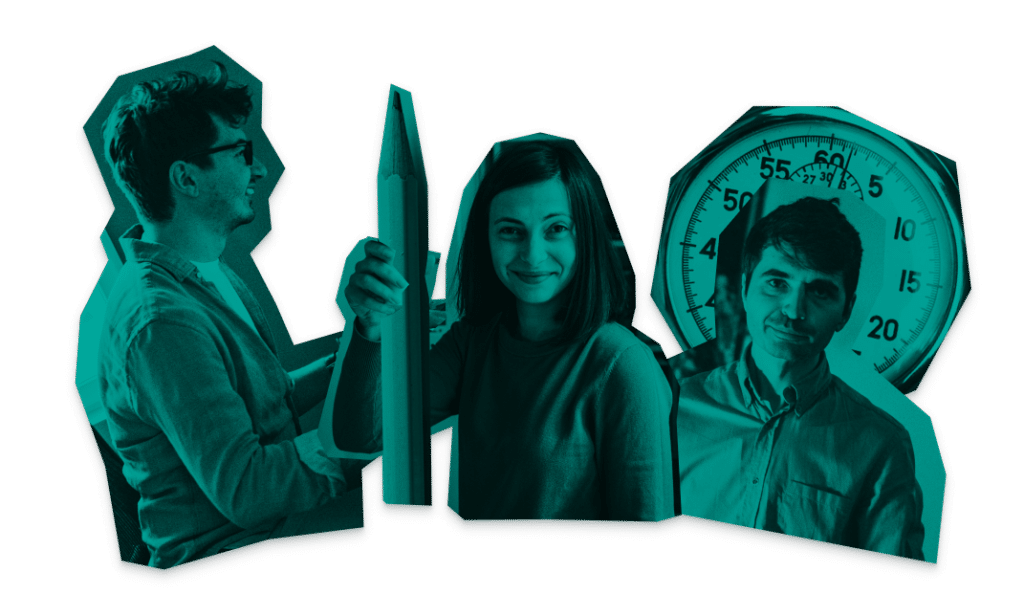
The blunt truth is that the risks are way more dangerous if we’re the ones who are not okay, whatever that means: sometimes it could equal all kinds of frustrations around how things work, in other scenarios could mean personal struggles and dilemmas of all kinds.
Our current mantra is that if we don’t protect ourselves, everything could easily fall like a domino.
That’s why each of us is investing a lot of time and energy in becoming a better leader: from being a member of The Watercooler gang, going to therapy or taking coaching sessions — we genuinely embraced them all and we’re quite proud with the progress we’ve been making so far.
Therefore, before being obsessed with the team’s needs and requirements only, we learned that we should stop a bit from the rush and relearn how to keep a healthier rhythm. This means that we allow ourselves to let our voice heard as well, no matter if the echo is sometimes irritable, anxious, lost or at the opposite side of the spectrum: joyful, optimistic, uplifting.
The same applies in the airplanes. In the case of emergency, if the oxygen masks fall, you need to put yours first and then help your kid or the one who sits next to you. And that’s OKAY.
If we should name one single advantage of doing such a gathering with regularity than this one beats them all: the simple fact that we nurtured a safe and friendly environment, where we can share vulnerabilities of all kinds, means the world to us. The path we chose is tough and we clearly need more kindness, tolerance, empathy, and care. We decided to lead by example.
❄️ Happy Holidays
Now that everyone in the team got some top-notch gifts at the Secret Santa’s gathering, we’re ready to unplug a bit, take distance, reset the speed, and make great memories with the dear ones.
We wish you all Happy Holidays and an end of the year full of beautiful experiences that will give you drive and optimism in 2019. Stay awesome!
Building websites for a living?
With the Themes Bundle you get all our WordPress themes and save more than $2000.
Start the conversation